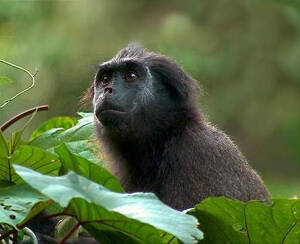
Pig-tailed langur (Simias concolor) has two subspecies. Pig-tailed langurs are related to other langurs and proboscis monkeys; all belong to the primate family Cercopithecidae. The scientific name of the pig-tailed langur, Simias concolor, was named by American zoologist and botanist Gerrit Smith Mi...
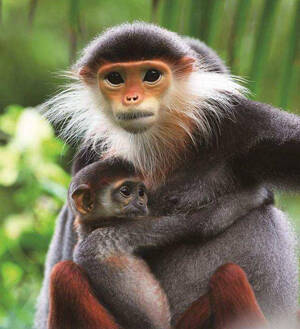
Douc Langur (scientific name: Pygathrix), also known as Douc Langur, has three species: gray-legged white-shanked langur, red-legged white-shanked langur, and black-legged white-shanked langur. It is one of the most colorful primates.The white-shanked leaf monkey is a diurnal monkey that lives in tr...
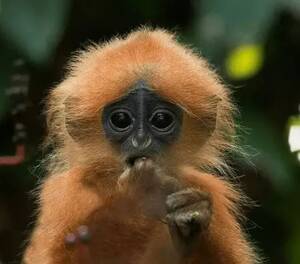
The scientific name of the chestnut-red leaf monkey is Presbytis rubicunda. It likes to move around in tall trees and rarely goes to the ground. It also sleeps in big trees at night. It eats almost only leaves. Its favorite food is the vines of Borneo, the young leaves of some rare trees and some un...
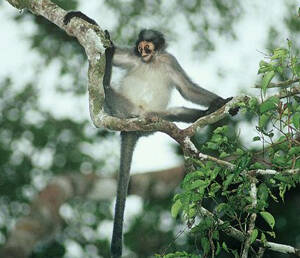
Ho's leaf monkey, scientific name Presbytis hosei, moves in groups and is active during the day. It mainly feeds on tough leaves, but also eats fruits, flowers and insects. It is divided into four subspecies, one of which, Presbytis hosei canicrus, was declared extinct in its original range, nor...
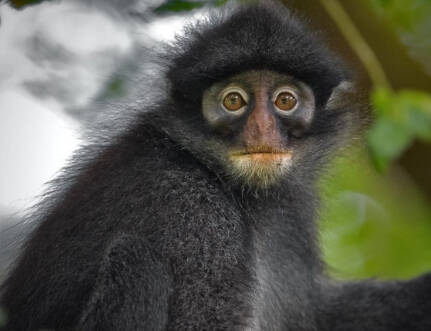
The scientific name of the Indonesian langur is Presbytis femoralis, and its English name is Sarawak Surili, Bornean Banded Langur. It is generally believed that there are no more than 20 Indonesian langurs living in the tropical rainforests of Singapore. Studies in recent years have found that the...
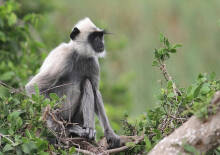
Tufted Gray Langur (scientific name: Semnopithecus priam) is also known as Tufted Gray Langur. It has two subspecies. Its specific habits are unknown.Listed in the 2008 Red List of Endangered Species of the World Conservation Union (IUCN) ver 3.1 - Near Threatened (NT).Listed in the CITES Appendix I...
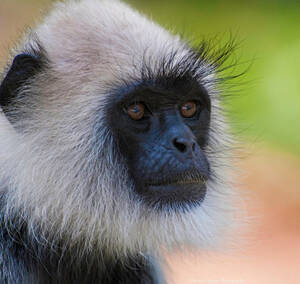
Hector's Gray Langur (scientific name: Semnopithecus hector), also known as Tarai Gray Langur, is a subspecies of the Indian Gray Langur.Hector's gray leaf monkeys usually like to form small groups of more than ten and spend 5 hours a day grooming each other. The call is relatively low, and...
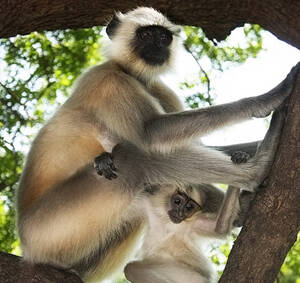
Indian Gray Langur (scientific name: Semnopithecus entellus) is called Northern Plains Gray Langur in foreign language, and has no subspecies.Indian Gray Langurs usually like to form small groups of more than ten or large groups of nearly 100, and spend 5 hours a day grooming each other. The call is...

The specific habits of the Kashmir gray langur (Semnopithecus ajax) are unknown.Listed in the "Red List of Threatened Species of the World Conservation Union" (IUCN) 2015 ver 3.1-Endangered (EN).Listed in Appendix I, Appendix II and Appendix III of the Convention on International Trade in...
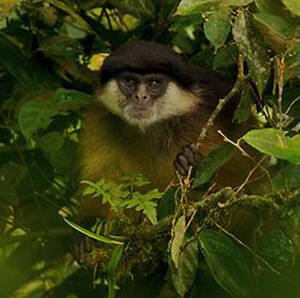
Olive Colobus (scientific name: Procolobus verus) is the only colobus in the genus Procolobus.Olive Colobus is a diurnal species. It is arboreal and moves quickly between trees. They live in small groups of 5-20 individuals, with one adult male, some females and half of the immature young. Multiple...
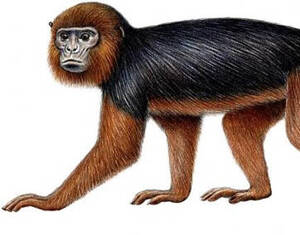
Waldron’s Red Colobus (Piliocolobus waldronae) has been a subspecies of the Western Red Colobus since 1978. It is native to West Africa. It was thought to be extinct in 2000. However, new evidence suggests that there is a very small population of these monkeys living in the southeastern corner of C...

The Tshuapa Red Colobus (scientific name: Piliocolobus tholloni) was once a subspecies of the Tana River Red Colobus and was classified as an independent species in 2013. It mainly feeds on plant food such as leaves. Its thumb is degenerate, while its big toe is thick, and its hind limbs are usually...
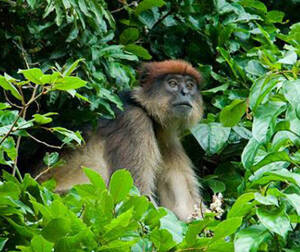
The scientific name of the Ugandan red colobus is Piliocolobus tephrosceles, and its foreign name is Uganda Red Colobus. It feeds on leaves, fruits, and flowers. Its specific habits are unknown.Listed in the "World Conservation Union" (IUCN) ver.: 2008 Red List of Primates - Endangered (EN...
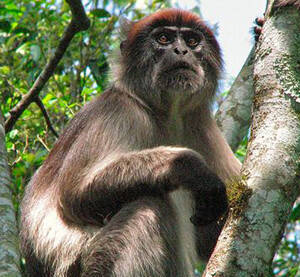
Tana River Red Colobus (scientific name: Piliocolobus rufomitratus) is called Eastern Red Colobus in foreign language, and has no subspecies.Tana River Red Colobus has a smaller family territory than other red colobus monkeys. The average family range is close to 9 hectares, with an average of 34-11...
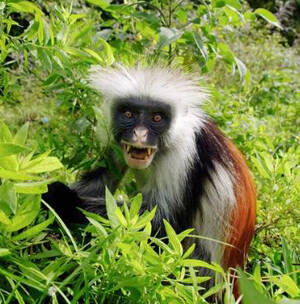
Preuss’s Red Colobus (scientific name: Piliocolobus preussi) is also known as Preuss’s Red Colobus. It was once a subspecies of the West African red colobus.Preuss’s Red Colobus is a diurnal animal. It is arboreal and moves quickly between species. The complex structure of their stomachs has been...
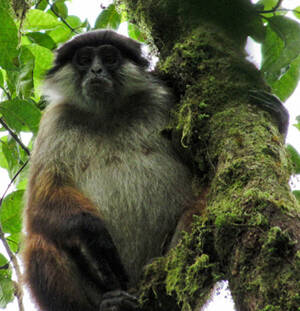
Pennant's Red Colobus (scientific name: Procolobus pennantii) is also known as Bioko Red Colobus, and has no subspecies.The family territory of the Pennant's Red Colobus can extend to 100 hectares or more, often overlapping with the territories of other groups. Diurnal. They are arboreal and...

The giant shore crab is also commonly known as the emperor crab, and should not be confused with the king crab.The giant shore crab is a predator of many organisms, especially bivalves, polychaetes, and small crustaceans. They are mainly nocturnal, but they are active during the day depending on the...
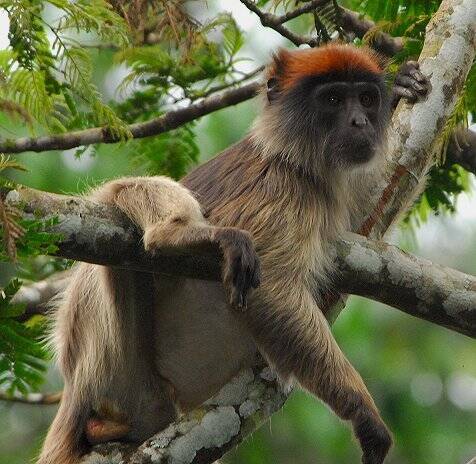
Oustalet’s Red Colobus (scientific name: Piliocolobus oustaleti), also known as Oustalet’s Red Colobus, was once a subspecies of the Tana River Red Colobus and was classified as an independent species in 2013.The Ustarai red colobus has a smaller family territory than other red colobus monkeys. Th...
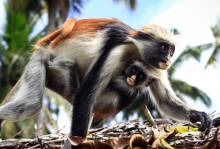
Zanzibar Red Colobus (scientific name: Piliocolobus kirkii) is called Zanzibar Red Colobus in foreign language, and has no subspecies.Zanzibar Red Colobus is a diurnal animal. It is arboreal and moves quickly between genera. The group consists of multiple males and multiple females, with each group...
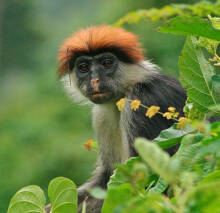
Udzungwa Red Colobus (scientific name: Piliocolobus gordonorum) is called Udzungwa Red Colobus in foreign language, and has no subspecies.Udzungwa Red Colobus is diurnal. Inhabits primary and secondary forests from lowland rivers to mountains, semi-deciduous forests, mature evergreen forests, from 2...